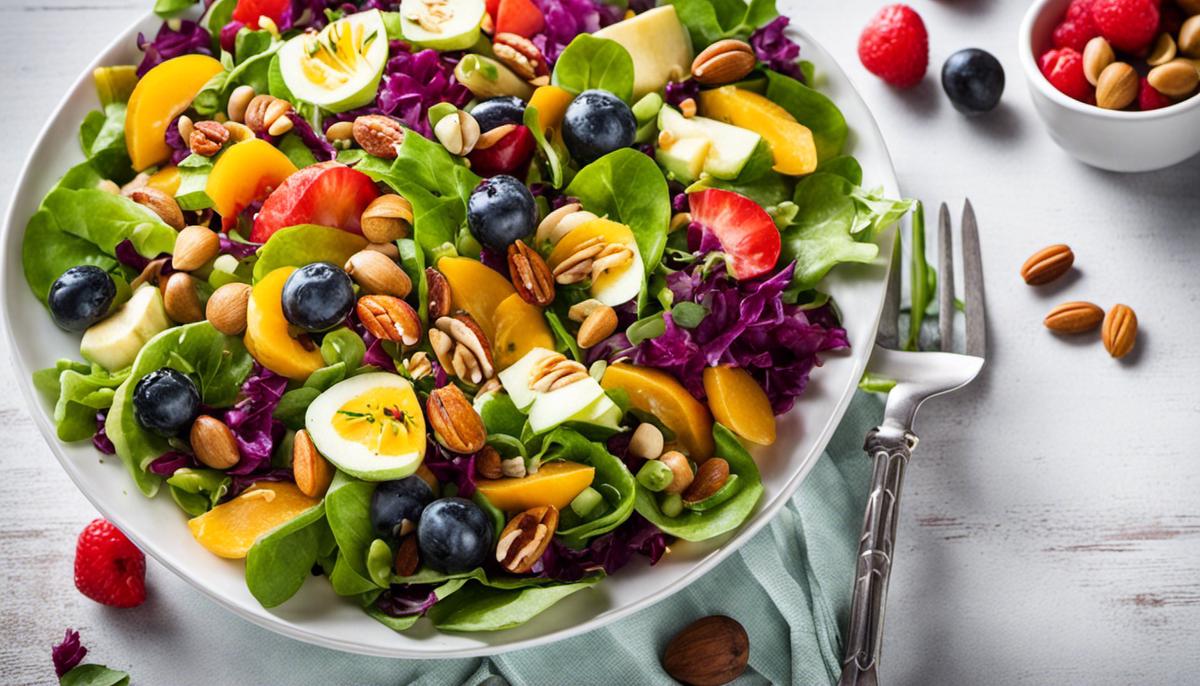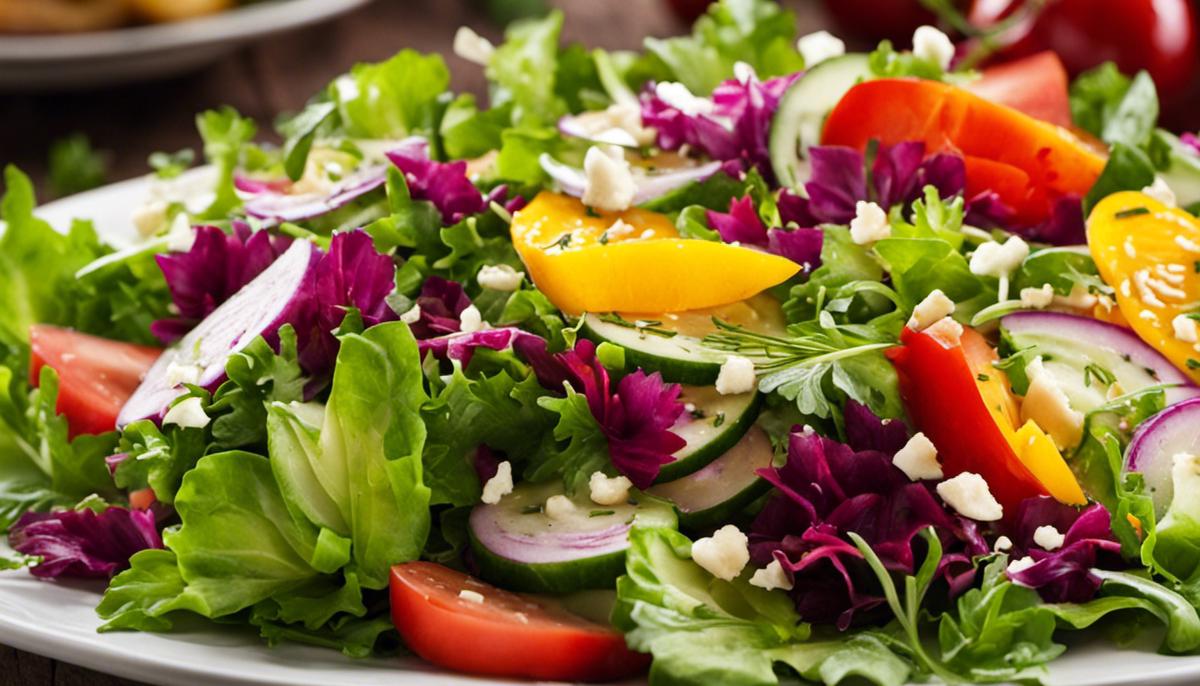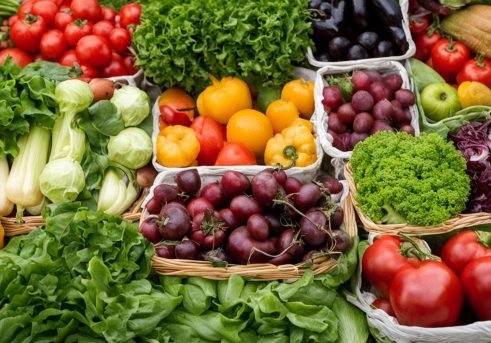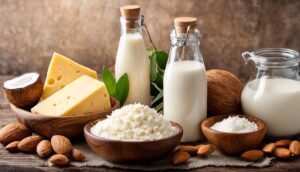The journey to healthier living often begins simply, beginning with gradual changes to our diet. Incorporating nutrient-rich and delicious salads is an ideal starting point. Whether you’re a seasoned salad eater or a novice, enhancing your knowledge about the selection of ingredients, their nutritional profiles, and benefits of organic and locally sourced produce, can make all the difference. Understanding how preparation methods like chopping, roasting, or shredding uniquely shape the flavor, texture, and health benefits of your dish is another key aspect. Topped with the right salad dressing, assembled through the knowledge of recipes, flavor combinations, and ingredient ratios, the humble salad can truly be a power-packed, tantalizing meal.
Choosing the Right Ingredients
A salad, as simple as it may sound, can be a magnificent symphony of flavors, textures, and colors, all harmoniously dancing to the tune of health and vitality.
The secret lies, as is often the case with gastronomy, in the choice of ingredients – those that not only enthrall the taste buds but are also on speaking terms with nature’s ultimate gift: health.
So, if you are geared up to toss some health in your salad bowl, we bring you the nitty-gritty of what makes an ingredient worthy of joining your salad party.
Salad-loving epicureans, the holy grail of health comes in the form of vibrant, leafy greens.
Rich in fibre, packed with essential vitamins and minerals such as iron, calcium, and magnesium, greens like spinach, kale, and Swiss chard inch at the forefront of a healthy salad.
Honoring the rules of ‘eat the rainbow,’ don’t shy away from reds, yellows, purples, and whites for the antioxidant punch they offer.
Ripe tomatoes, bell peppers, and beets pack a lycopene-punch while cruciferous whites like cauliflower and cabbage could be your ticket to a naturally detoxed system.
Next in line comes the grandeur of brilliant berries and fruits.
Touted for their antioxidant properties, berries not only add a burst of color but come loaded with fiber, vitamin C, and cancer-fighting antioxidants.
Fruits like apple, pear, or mango pack a hearty serving of dietary fiber, vitamins, and minerals leaving your taste-buds and health equally enchanted.
Once you have your pick of the greens and colors, it’s time to pivot towards lean proteins like grilled chicken, tofu, or a hard-boiled egg.
This nutrient powerhouse is known to promote muscle health, rebuild tissues, and offer long-lasting satiety.
Not a fan of meats? Legumes, chickpeas, or beans can swoop in as plant-based protein winners!
Sprinkle some nuts and seeds for a crunchy finale!
Almonds, chia seeds, or sunflower seeds lend a much-needed omega-3 fatty acid boost, promoting heart health while delivering an extravagant texture.
While we are all up for flavor play, don’t overlook dressings while composing your salad masterpiece.
Opt for heart-healthy oils, like olive or avocado oil, versus the calorie-laden, processed ones.
Vinegar, citrus juice, herbs, and spices can add a touch of gourmet without burdening the calorie bank.
Remember, variety is the spice of life, and same holds when it comes to salad.
Experiment with exotic flavors, try new ingredients, but above all, ensure each one respects the shrine of health and taste your salad bowl represents.
So, roll up your sleeves, unleash your inner salad artist, and create, for salads aren’t just about greens served dull, but a canvas to play your health symphony on!

Preparation Techniques
Uncovering the Ensemble Called the Salad: Keeping the Nutrient Quotient High
Delving deeper into the healthy tapestry of salads, it’s pivotal to further explore the appropriate ways to preserve their nutritional potency. Creating a flavor-packed salad is an art, akin to a well-orchestrated symphony. Every ingredient must harmoniously blend with the next, all while retaining its nutritional value. This isn’t merely about tossing colorful vegetables on a plate, but rather about presenting a nutrient-dense masterpiece.
One absolute cornerstone of producing remarkable salads involves the handling and preparation of ingredients. Preserving the nutritional value of your salad mix-ins during preparation is crucial. However, it’s essential to remember that not all vegetables or fruits endure the same preparation techniques. Therefore, it becomes a must to understand how to best prepare different ingredients to maintain their authenticity, flavor, and nutritional beneficence.
Raw vegetables often hold an upper hand over cooked ones in terms of nutritional value. Despite this, some ingredients like tomatoes, mushrooms, and spinach can unlock their nutrient potential under heat. Briefly sautéing them can escalate the availability of nutrients like lycopene and beta carotene.
However, remember, overcooking is your foe. It can annihilate sensitive nutrients like vitamin C and folate. Aim for a light sauté or steam, just until colors become more vibrant and flavors slightly softened. Meet the fine line where the original crunch of the veggies mingles with a softer texture, enhancing their natural sweetness.
Leaning on to the subject of hydration, a major part of salad ingredients is water. Rapidly boiling vegetables or fruits can strip them off their water-soluble vitamins like B and C, draining their nutrition into the cooking water. Gradual heating methods like slow steaming or a quick blanch is far kinder on the ingredients, preserving the nutrients.
Beyond the method of cooking, the timing of the preparation plays a major role. Chopping or slicing vegetables several hours before their actual use invites nutrient loss as the interior surfaces are exposed to air and light. As such, it’s recommended to chop your salad ingredients not too long before you intend to use them.
Furthermore, it’s found that marinating vegetables, specifically in an acidic marinade (lemon juice or vinegar), can retain, and even augment, its nutritional density. It can enhance the antioxidants in the veggies and add an exciting flavor profile to the salad.
Showcasing a profound regard for the quality and preparation techniques required for salad ingredients equates to a symphony of flavors that highlights peak freshness and commitment to health. The nutritional tableau of every salad component is precious; consider and embrace each ingredient as you craft your salad, and you’re bound to create a dish full of harmonized flavors and healthful nutrition. The timeless adage rings true: it’s not about what you add but how you nurture each bite of your salad. Food, after all, tastes better when prepared with mindfulness and love.

Creating Your Salad Dressings
Returning to our gorgeous spread of vibrant greens, fresh fruits, lean proteins, and hearty seeds, it’s now time to bring these delightful components together, binding and accentuating their unique flavors, truly making the salad sing.
Dressing is the key, acting as the conductor to the symphony of tastes contained within your salad bowl. But it is important that we keep in alignment with our health-conscious goal. So, let’s learn how to whip up some quick homemade dressings that not only starter a aromatic escapade but also put a full-stop to unwanted additives or sugars that are commonly found in store-bought options.
In the culinary world of dressings, the cast of characters revolves around two principal ingredients – oils and vinegars. The key in creating a balanced dressing lies in the ratio, typically one part vinegar to three parts oil. As for the type of oil and vinegar, here’s where the fun begins, and your personal preference steps into the limelight.
Olive oil and balsamic vinegar make a classic duo, while avocado oil with apple cider vinegar offer a new spin. For a more Asian inspired twist, toasted sesame oil and rice wine vinegar can whisk your taste buds to the East.
The mission here is to balance the fat and acidity of these two components. Fat carries flavor and creates richness, while acidity lends brightness to lighten the eating experience. The joy of homemade dressings lies in the potential for playful experimentation.
Adding fresh herbs, spices, or aromatics can elevate the complexity and profile of your homemade salad dressing exponentially. Try dill for a refreshing lemony herbaceousness, or chili for a passionate spicy kick. Garlic or onion lend an earthy depth, and citrus zest can be your secret weapon for an unexpected punch of fresh flavor.
What about adding a healthful boost to your dressings? Consider blending in a spoonful of smooth yogurt or a paste made from nutrient-rich avocado for a creamy texture. Don’t forget the manifold health benefits of incorporating seeds in your dressing. Ground flaxseeds or chia seeds can offer a nutty flavor along with a significant nutritional punch.
Thinking about sweetness? Much too often, salad dressings become vessels for hidden sugars. Homemade dressings however, give you the reins. For a dose of natural sweetness, a hint of raw honey or a splash of freshly squeezed orange juice can be just the ticket, without derailing your health-oriented goals.
Lasty, always remember, creating dressings is as much a science as it is an art. And as with all artistic exploits, do not shy away from using your intuition. Play with flavors, adjust to taste, and have fun. This is your edible canvas to create a nutritional masterpiece.
Healthy, homemade salad dressings are not only easy to mix up but they also add an utterly distinctive layer of flavor to your salad. Whether you enjoy a basic vinaigrette or want something creamier or fruitier, the options are as endless as they are delicious. Dive into this adventurous culinary endeavor and unlock the potential of your salad!

So, as you embark on this journey of learning about salads, remember to enjoy the process. Start by exploring various nutritional profiles of ingredients and venture into organic, locally sourced fruits, and vegetables. Embrace the various preparation methods and see how each brings out a new dimension to your salad. Make salad dressings at home, play around with different recipes, balance the flavors, and use the right ingredient ratios. Soon, you’ll discover a world of salads that are not only enjoyable and satisfying but also healthful. Embrace healthier eating with open arms and let salads be your flavorful accomplice!





